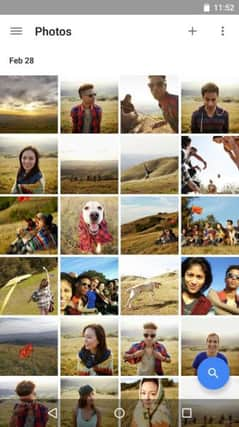How to migrate from Picasa to Google Photos


Picasa is an image organiser and viewer that lives on your PC and catalogues all your pictures and videos by date, keyword, subject and so on. It’s so good at what it does that soon after its launch in 2002, Google snapped it up.
But we have moved into the second age of digital photography, in which pictures are taken on phones, not cameras – and the business of transferring them to your computer, if at all, is handled automatically. Thus, Google is shutting Picasa down. If you have it, you can continue to use it but there will be no more updates to keep it compatible with your computer or your photos.
Advertisement
Hide AdAdvertisement
Hide AdInstead, Google would like you to use its newer and now near-universal service, Google Photos, with which it is positioning itself as the Kodak of the 21st century. It runs on your phone as well as your computer, and synchronises your picture collection automatically. But whereas Kodak never asked to keep copies of your prints for itself, the cloud storage principle means Google just could.
There’s another worry, too: Google Photos is nowhere near as intuitive as it should be. Phones don’t have enough storage to hold even a modestly-sized image collection, and when you try to free up space you may find yourself deleting pictures from your computer, too.
Furthermore, it’s a fool’s errand to try to upload your entire back catalogue of pictures to Google Photos, so keeping everything together in a single collection is suddenly harder than it’s ever been.
The Photos app itself is perfectly serviceable – and indeed a recent update specifically enables the removal of pictures stored locally on your phone’s SD card – but it’s poor at letting you know what it’s doing.
Advertisement
Hide AdAdvertisement
Hide AdSo if your phone uses Google Photos (and if it doesn’t, it probably will soon) here are three golden rules...
1. The app stores everything in a cloud, not on your phone or your computer, so if you hit the delete key they disappear completely. However, you have up to 60 days to retrieve them before their removal becomes irrevocable.
2. If you take a picture using your phone, it will remain on either its internal memory or SD card, despite having been uploaded to the cloud. This varies by handset but in any event, the local version can safely be deleted and will help offset those annoying “device full” messages. Be careful that you’re deleting the local version and not the one on the cloud, but it’s easy to get it wrong. Keep “Backup & Sync” on the app turned on.
3. Don’t be put off by the association with Google’s white elephant social network Google Plus: there is no longer a link, and you don’t need a Google Plus account to use the Photos app. But equally, if you like Picassa, don’t be put off by its death notice; it’s good for a few more snaps yet.